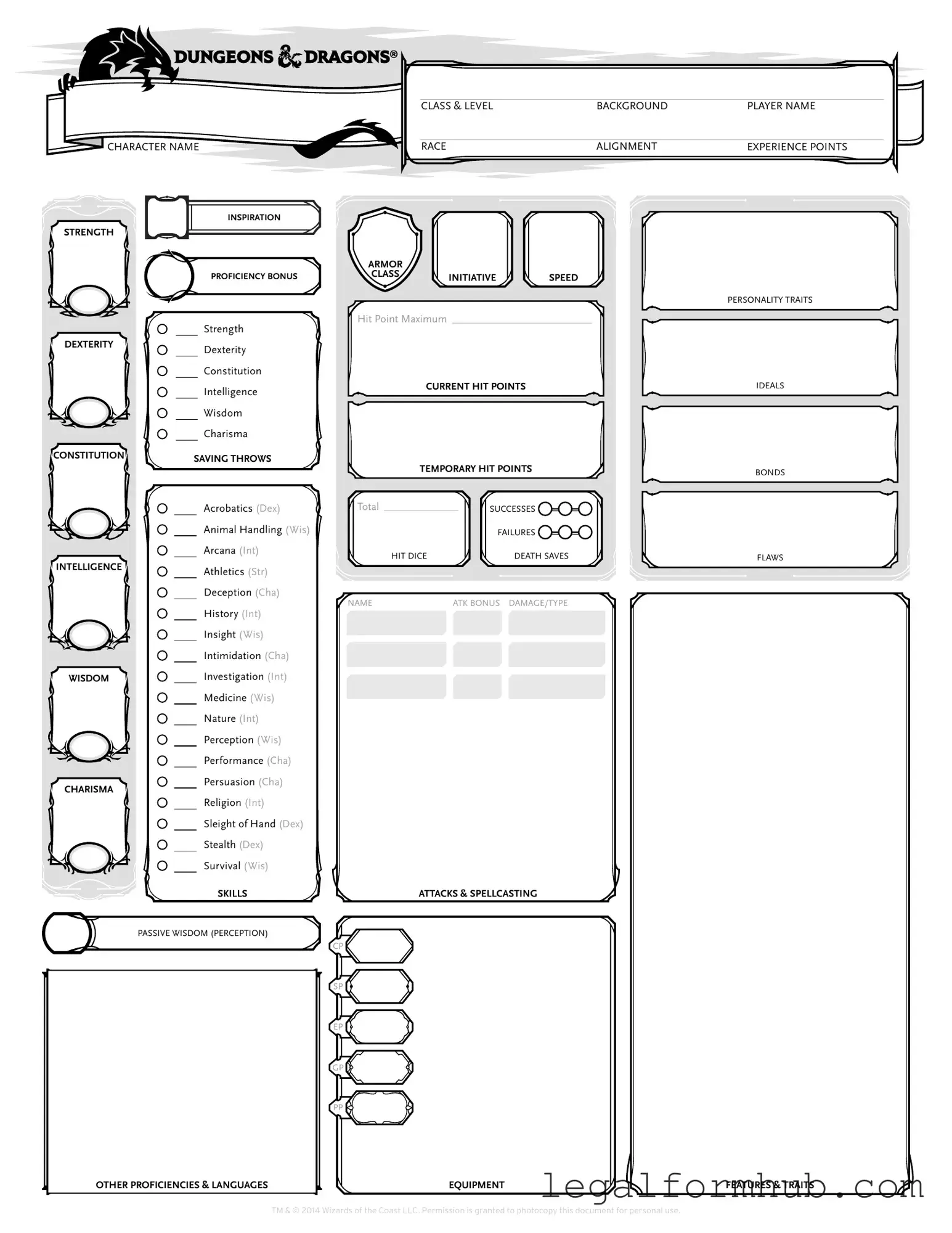The Dungeons & Dragons (D&D) Character Sheet is similar to a role-playing game (RPG) character sheet used in various tabletop RPGs. Like the D&D sheet, these character sheets provide essential information about a player's character, including attributes, skills, and abilities. They serve as a quick reference guide during gameplay, allowing players to track their character's progress and make decisions based on their abilities. Each RPG may have its unique format, but the core purpose remains the same: to facilitate gameplay and enhance the immersive experience.
Another document that shares similarities is the Pathfinder Character Sheet. Pathfinder, a popular RPG derived from D&D, has its own character sheet that includes similar sections for attributes, skills, and spells. Players of Pathfinder use this sheet to manage their character's abilities and track their development over time. The layout may differ, but the function of organizing character information for easy reference during sessions is a commonality that both sheets share.
The GURPS Character Sheet is also comparable. GURPS, or Generic Universal RolePlaying System, allows for a wide range of character customization. The character sheet captures attributes, skills, and advantages, much like the D&D sheet. Players utilize this document to keep track of their characters' unique traits and abilities, ensuring that they can engage effectively in the game. The emphasis on character development and customization is a key similarity between these two sheets.
Additionally, the Shadowrun Character Sheet mirrors the D&D Character Sheet in its purpose. Shadowrun, a cyberpunk RPG, requires players to document their characters' abilities, skills, and gear. The character sheet serves as a vital tool for managing gameplay, ensuring that players can quickly access their character's information during fast-paced scenarios. Both sheets emphasize the importance of character attributes in influencing gameplay outcomes.
The Call of Cthulhu Character Sheet is another document that shares features with the D&D Character Sheet. In this horror-themed RPG, players track their characters' skills, attributes, and sanity levels. The character sheet is crucial for gameplay, as it allows players to manage their characters' mental and physical states. Both sheets serve as essential tools for character management, highlighting the importance of various attributes in storytelling and gameplay.
In addition to the various forms discussed, the North Carolina Motor Vehicle Power of Attorney form is another essential document that can aid in delegating responsibilities. This particular form empowers individuals to appoint someone to manage their motor vehicle transactions efficiently, making it valuable for those needing assistance with tasks related to their vehicles. For further details, you can refer to the Motor Vehicle Power of Attorney form.
Finally, the Vampire: The Masquerade Character Sheet provides a similar function in the realm of horror RPGs. Players use this sheet to document their vampire characters' traits, abilities, and backgrounds. Like the D&D Character Sheet, it emphasizes character development and allows for strategic decision-making during gameplay. The focus on attributes and skills in both documents underscores their role in shaping the gaming experience.
